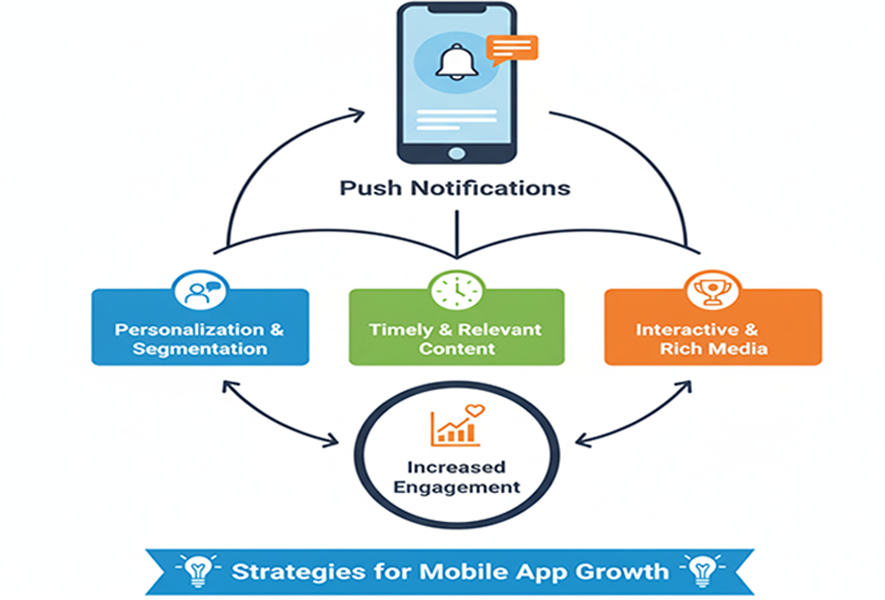
Push Notifications and User Engagement Strategies
A successful push notification strategy focuses on delivering personalized, timely, and relevant messages that provide genuine value to the user. Poorly executed notifications can feel spammy and intrusive, leading to user fatigue and high opt-out rates.
Personalization and segmentation
- Segment your audience: Divide your users into distinct groups based on demographics, app behavior, interests, and engagement history. For example, send a different message to a new user than to a loyal customer.
- Personalize your messages: Go beyond just using a user's name. Use their in-app behavior, purchase history, and location data to send tailored content. An e-commerce app could send a push notification with a discount on an item a user recently browsed.
- Leverage user-provided data: Ask users about their preferences through in-app surveys or a preference center, then use that "zero-party" data to customize notifications. This builds trust and ensures relevance.
Timing and frequency
- Time notifications strategically: Analyze user behavior to determine optimal delivery times when they are most likely to be engaged. For global audiences, respect local time zones to avoid disturbing users late at night.
- Implement frequency capping: Avoid overwhelming users by setting limits on how many notifications they receive over a period. Balance frequency to stay top-of-mind without causing annoyance.
- Use real-time triggers: Send notifications based on real-time user actions, such as cart abandonment or completing a specific task. This ensures the message is timely and contextually relevant.
Compelling and actionable content
- Use clear, concise, and actionable language: With limited screen space, get straight to the point and include a clear call-to-action (CTA). Use action-oriented language, such as "Shop Now" or "Claim Your Reward".
- Enhance with rich media: Use rich media like images, GIFs, and emojis to make your notifications stand out and increase click-through rates. A product image in a flash sale notification can be more effective than text alone.
- Incorporate deep linking: Send users directly to the relevant page in your app when they tap the notification. This reduces friction and makes the experience more seamless.
Different types of notifications
- Informational: Keep users updated with relevant, non-promotional information like news, weather, or product updates.
- Transactional: These are crucial for building trust by confirming a transaction or providing real-time updates on orders and delivery status.
- Promotional: Announce limited-time offers, flash sales, or new features to drive conversions and re-engagement.
- Automated and triggered: Use automation to create a series of welcome messages for new users or reminders for inactive users to re-engage with the app.
Best practices for platform-specific considerations
- Handle iOS and Android differences: Note that Android notifications are often enabled by default, leading to higher opt-in rates, while iOS requires explicit user permission.
- Optimize the opt-in experience: For iOS, use a pre-permission screen to explain the value proposition before the system's native permission request. For both platforms, ask for permission at a meaningful moment, not immediately upon launch.
- Measure and analyze performance: Track key metrics like click-through rate, conversion rate, and opt-out rate. Use A/B testing to experiment with different copy, timing, and creatives to continually refine your strategy.
